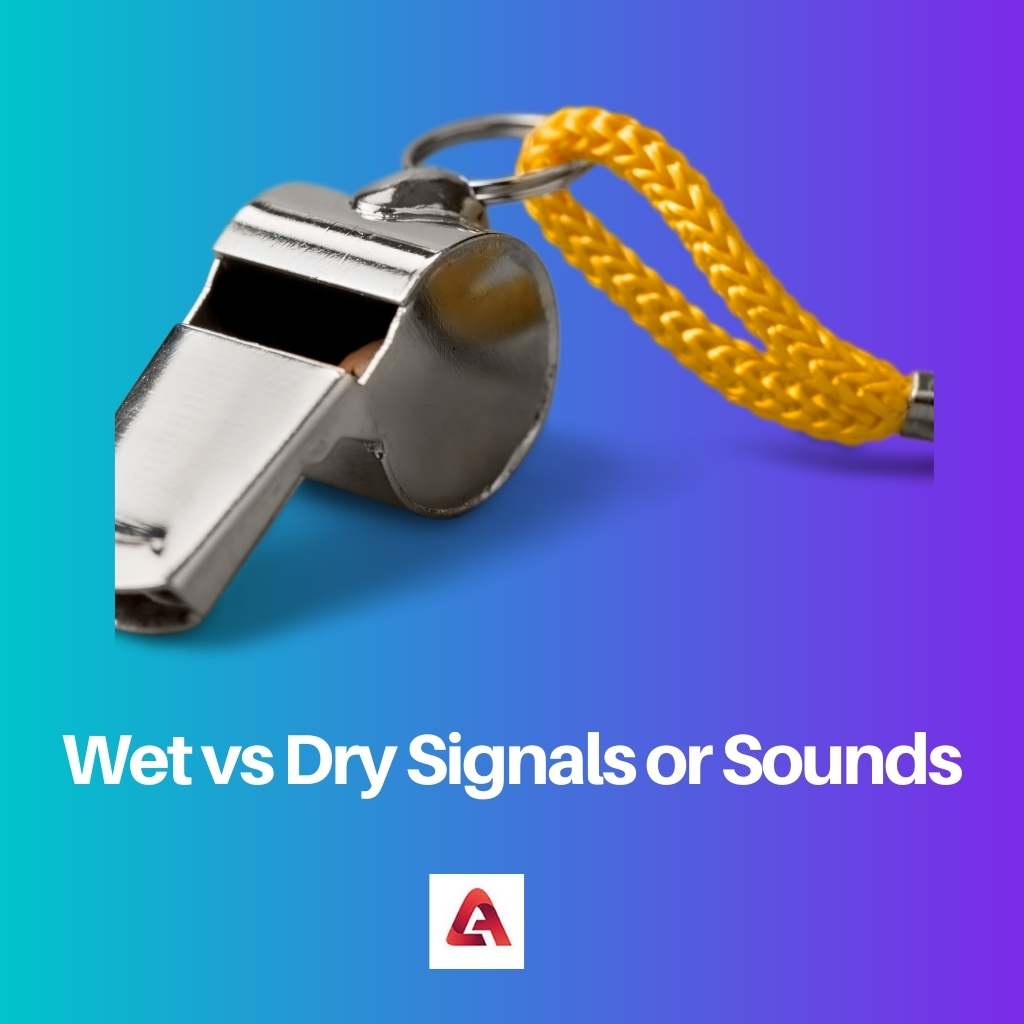There are distinct signals or sounds, such as periodic, non-periodic, wet, and dry signals or sounds. Let’s further learn more about wet and dry signals or sounds.
On the other hand, a dry signal is a signal that is unprocessed or of high quality. In layman’s terms, when a dry signal or sound is modified using any audio editing software, it becomes a wet signal or sound.
Key Takeaways
- Wet signals refer to audio signals with added effects, such as reverb or delay, while dry signals are the original, unprocessed sounds.
- Mixing wet and dry signals allows for greater control over the final sound, enabling a balance between the natural tone and added effects.
- Wet signals can create a sense of depth and space, while dry signals maintain the clarity and presence of the original sound.
Wet vs Dry Signals or Sounds
The difference between wet and dry signals or sounds is that wet signals are not original signals or sounds. In contrast, dry signals are recorded without any superficial tones and sounds. Wet signals and dry signals both have their importance in the world of music.

In the music industry, wet signals play a vital role as these are modified sounds or signals to enhance the actual music by changing effects with the help of audio editing technology.
Dry signals or sounds are equally crucial because these are the original signals or sounds without any distortion. Therefore, such signals are of high quality and bass.
Comparison Table
| Parameters of Comparison | Wet Signals or Sounds | Dry Signals or Sounds |
|---|---|---|
| Type of Signals or Sounds | modified by using audio-based tools. | Original |
| Equipment Required | Amplifier, Transformer, Pages, etc. | A musical instrument such as piano, guitar, recorder, and mike. |
| Quality | Though the quality of signals or sounds degrades, the result is pleasing. | The quality of the signals is original but could be unpleasing to the ears. |
| Popularity | These are extremely popular because they give the impression to listeners that they are in a fun environment. | These are not popular nowadays due to advancements in technology. |
| Example | Recording that is done by mobiles or other such devices. | The music we listen to on our gadgets. |
What are Wet Signals or Sounds?
Wet signals or sounds are the sounds that are enhanced by adding distinct effects with the help of audio editing applications and devices. Or, to put it another way, the output reaches the listeners.
Dynamic effects are to limit a sound to a particular volume or mute a sound or signal when it falls below a certain threshold.
The time-based effect allows the music editor to set echoes and delays in sounds or signals. Multiple tools and devices are used to add effects to sounds and signals to modify, such as an amplifier, maximizers, pages, equalizers, and transformers.
Wet signals or sounds are used in many entertainment sectors, such as television shows and movies, to make them more engaging and realistic.
In addition, game developers can embed wet signals or sounds in video and simulation games. League of Legends, Mario, Minecraft, and other games fall into this category.
What are Dry Signals or Sounds?
Dry signals or sounds are unprocessed, unaltered sounds that have been recorded without any audio effects. Alternatively, these sounds or signals serve as a future reference for creating wet signals.
The music editor can generate multiple wet signals through a single dry signal or sound by applying a different effect each time. Furthermore, high-quality microphones are necessary to record dry signals or sounds since it helps in reducing background noises.
Such sounds or signals also appear in the entertainment business, such as the sounds recorded for cartoon animation, which are the raw sounds of skilled human individuals.
Even the dialogues delivered in films and serials are mostly real without any external modification. Therefore, sounds or signals recorded by audio recorders, such as microphones, fall into the dry signal or noise category.
Despite their high quality, these signals and sounds may seem dull and monotonous to the listeners. Additionally, such sounds can be unpleasant (shrill, sharp, or low) to hear due to their roughness and rawness.
Main Differences Between Wet and Dry Signals or Sounds
- Wet signals or sounds are more popular among music fans than dry signals or sounds due to their dull tone.
- Songs or music played on our devices are examples of wet sounds. On the other hand, the voice we occasionally tape on our phones is an example of dry signals or sounds.
- https://hal.archives-ouvertes.fr/hal-00524797/
- https://link.springer.com/chapter/10.1007/978-3-030-59277-6_28

This is really helpful. I never knew there were dry and wet sounds. Shows how little I know about music. Gotta get more informed.
The world of music is certainly a complex one, This is very informative and I appreciate the effort to educate beginners through this post.
The article compares wet and dry signals effectively. Very informative.
This article is a great starting point for those interested in music theory and sound engineering. It clearly and articulately explains the concept of wet and dry sounds.
This reads like a Music Science class. Great for learning the basics of sound engineering.
The contrasting nature of dry and wet sounds is helpful for beginners to understand.